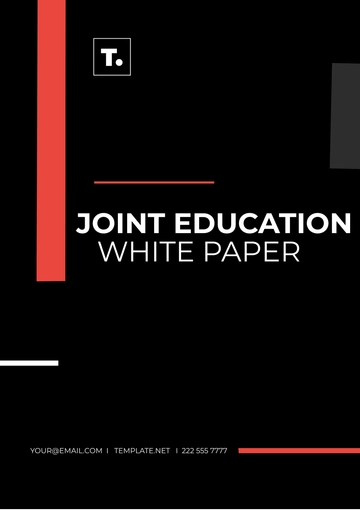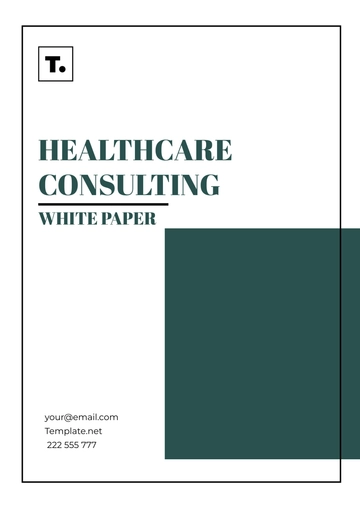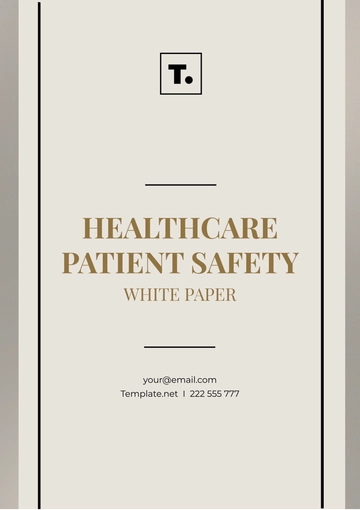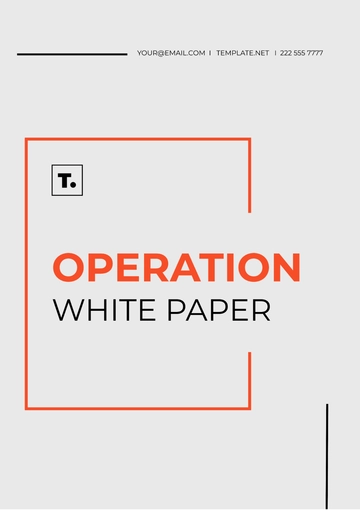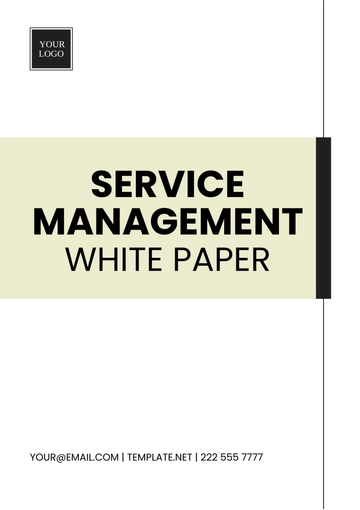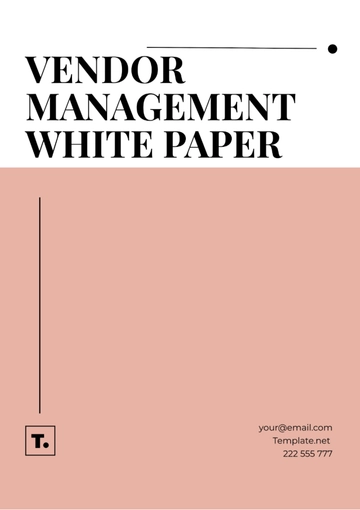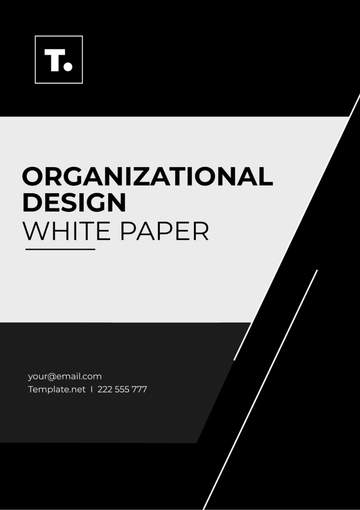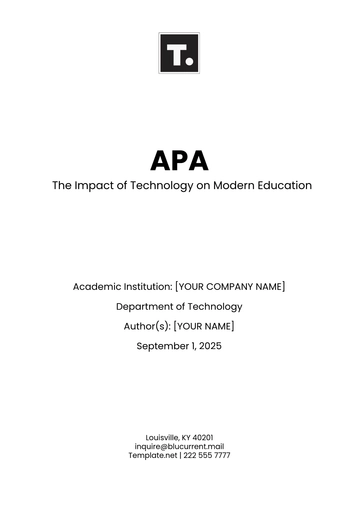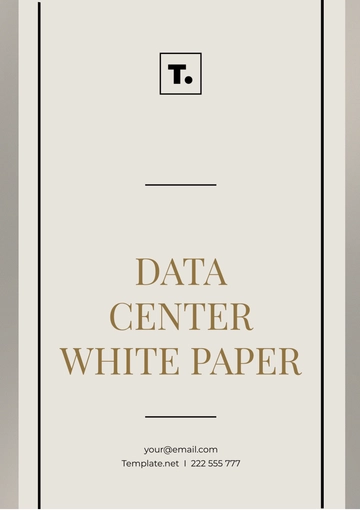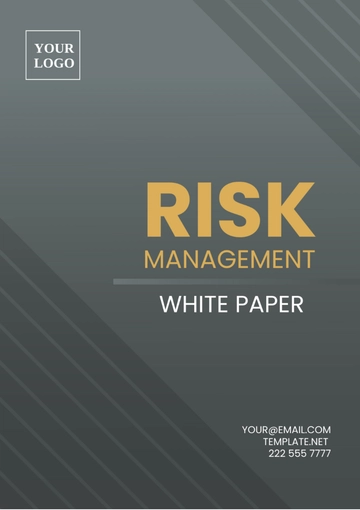Free Healthcare Patient Safety White Paper
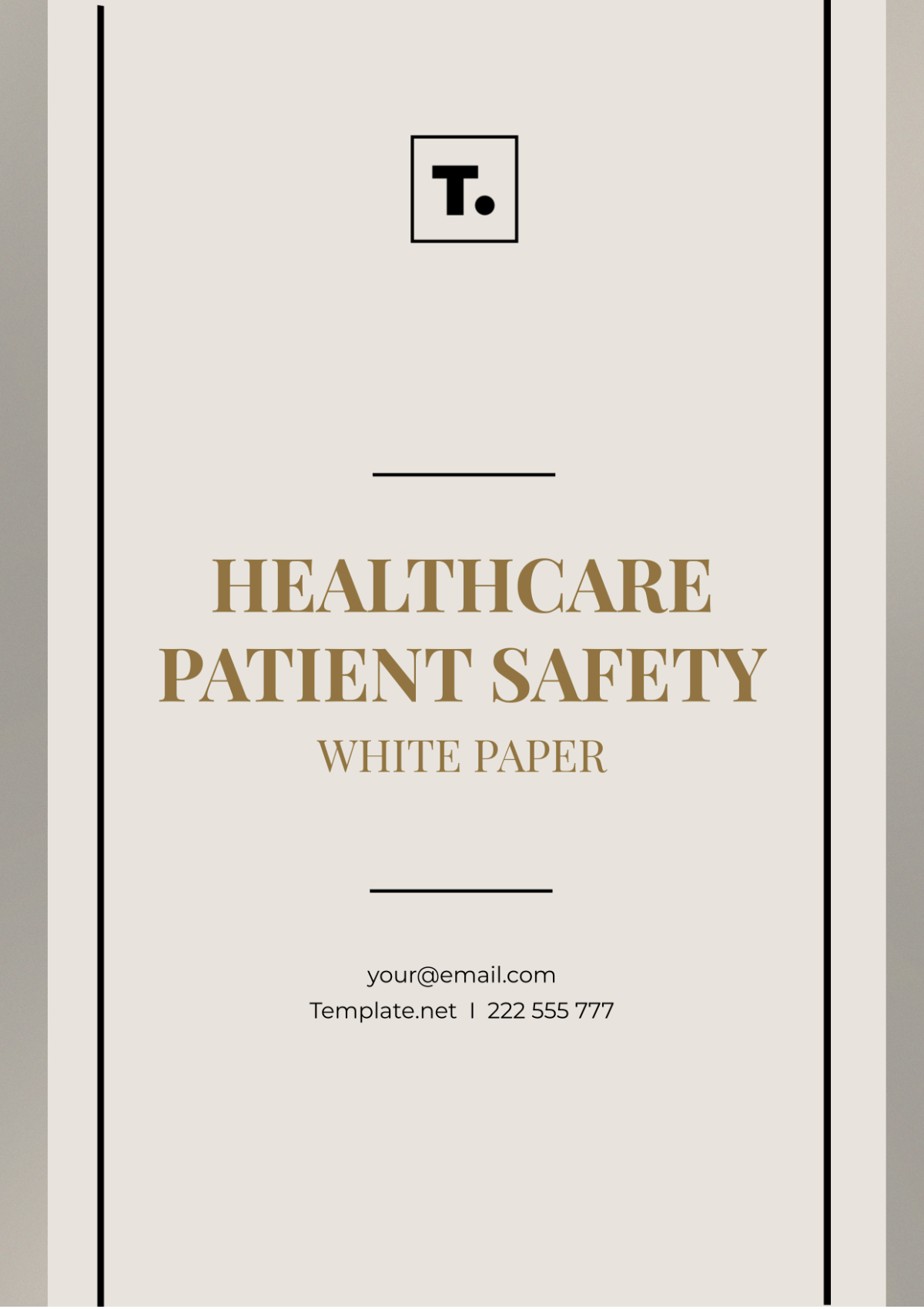
I. EXECUTIVE SUMMARY

In today's rapidly evolving healthcare landscape, ensuring patient safety is paramount. This white paper delves into the critical issues surrounding patient safety within healthcare settings and proposes innovative solutions to mitigate risks and promote a culture of safety among healthcare providers. By examining industry standards, regulatory compliance, and risk assessment methodologies, this document aims to provide valuable insights into enhancing patient safety outcomes.
II. INTRODUCTION
A. Background
The healthcare industry faces ongoing challenges in maintaining patient safety, with medical errors posing significant risks to patient well-being. According to recent studies, medical errors are a leading cause of mortality worldwide, highlighting the urgent need for comprehensive safety measures.
B. Purpose
The purpose of this white paper is to address the multifaceted aspects of patient safety within healthcare settings. By exploring industry standards, regulatory compliance, and risk assessment methodologies, this document aims to equip healthcare professionals with the knowledge and tools necessary to identify and mitigate potential risks effectively.
C. Scope
This white paper encompasses various aspects of patient safety, including medication errors, surgical complications, and healthcare-associated infections. It is intended for healthcare administrators, clinicians, policymakers, and other stakeholders committed to improving patient outcomes and reducing preventable harm.
III. INDUSTRY STANDARDS AND REGULATORY COMPLIANCE
A. Current Standards
Current industry standards, such as those established by the Joint Commission and the World Health Organization (WHO), provide guidelines for healthcare organizations to ensure patient safety. These standards cover areas such as medication management, infection control, and patient communication.
B. Challenges and Gaps
Despite the existence of regulatory frameworks, healthcare organizations continue to face challenges in implementing and adhering to safety standards. Common gaps include communication breakdowns, inadequate training, and resource constraints, which can compromise patient safety.
IV. RISK ASSESSMENT METHODOLOGIES
A. Overview of Risk Assessment
Risk assessment plays a crucial role in identifying potential hazards and vulnerabilities within healthcare systems. By proactively identifying risks, healthcare organizations can implement preventive measures to mitigate the likelihood of adverse events.
B. Common Approaches
Various risk assessment methodologies, including Failure Mode and Effects Analysis (FMEA) and Root Cause Analysis (RCA), offer structured approaches to identifying and analyzing potential risks. These methodologies help healthcare teams systematically evaluate processes and identify opportunities for improvement.
C. Case Studies
Case studies illustrate the practical application of risk assessment methodologies in real-world healthcare settings. For example, a hospital may use FMEA to assess the risks associated with medication administration and develop protocols to prevent medication errors.
V. INNOVATIVE SOLUTIONS FOR PATIENT SAFETY
A. Technology Integration
The integration of technology, such as electronic health records (EHRs) and barcode medication administration systems, can enhance patient safety by reducing medication errors and improving information sharing among healthcare providers.
B. Human Factors Engineering
Human factors engineering principles emphasize designing healthcare systems that account for human capabilities and limitations. By optimizing workflow design, equipment ergonomics, and user interfaces, healthcare organizations can minimize errors and improve patient safety outcomes.
C. Interdisciplinary Collaboration
Interdisciplinary collaboration fosters a holistic approach to patient safety, involving healthcare professionals from various disciplines, including physicians, nurses, pharmacists, and quality improvement specialists. By working together, these professionals can leverage their expertise to implement comprehensive patient safety initiatives.
VI. CONCLUSION
In conclusion, addressing patient safety requires a multifaceted approach that encompasses industry standards, regulatory compliance, risk assessment methodologies, and innovative solutions. By prioritizing patient safety and fostering a culture of continuous improvement, healthcare organizations can enhance patient outcomes and promote trust and confidence among patients and their families.
- 100% Customizable, free editor
- Access 1 Million+ Templates, photo’s & graphics
- Download or share as a template
- Click and replace photos, graphics, text, backgrounds
- Resize, crop, AI write & more
- Access advanced editor
Welcome to the pinnacle of patient safety documentation: Enhance and Discover the Healthcare Patient Safety White Paper Template, exclusively from Template.net. Crafted with precision, this editable and customizable template ensures your insights are presented flawlessly. Editable in our Ai Editor Tool, it streamlines your process, elevating your commitment to patient welfare.
